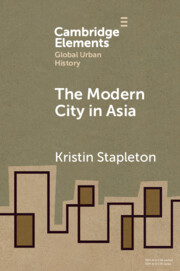Element contents
The Modern City in Asia
Published online by Cambridge University Press: 22 July 2022
Summary
- Type
- Element
- Information
- Series: Elements in Global Urban HistoryOnline ISBN: 9781108992947Publisher: Cambridge University PressPrint publication: 11 August 2022
References
- 6
- Cited by



